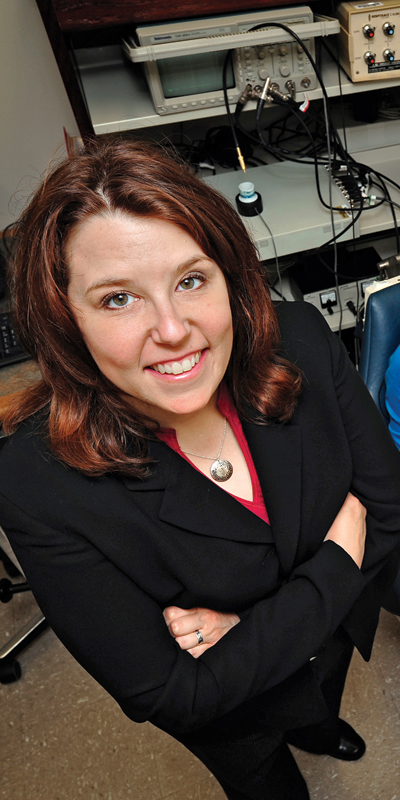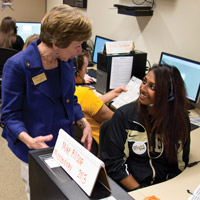
A new device developed through a collaborative effort at Purdue soon could help ease the difficulties of people with Parkinson’s disease. A recording of ambient sound, likened to the noisy chatter inside a full restaurant, is helping them to communicate more effectively.
“People with Parkinson’s disease commonly have voice and speech problems,” says Jessica Huber, pictured, associate professor of speech, language, and hearing sciences. “Their voices may become weak and quiet. They can sound breathy or rough, have changes in their rate of speech and suffer from long pausing and slurred speech.”
Therapy, such as the Lee Silverman voice treatment program, has trained many patients, but not all, to speak louder. Huber teamed with biomedical engineers to create a device that would help raise voices in real-world conversations — not just in a speech therapist’s office. Patients were asked to speak louder while a recording of background “multitalker babble noise” was played. The noise is essentially the sound of a restaurant full of patrons, but without the clash of silverware and glasses.
The background sound elicits a well-known phenomenon called the Lombard effect, a reflex in which people automatically speak louder in the presence of background sound. When the babble noise was turned up, Huber says, patients were able to become louder by 5 decibels on average during their everyday conversations.
Jim Jones, engineering resources manager, and Kirk Foster, senior research engineer, both in the Weldon School of Biomedical Engineering, built a prototype device that has been used with nearly 40 patients. Huber says her research team looked at the effectiveness of the device and the response from patients.
“We’ve noticed the patients’ voices are louder,” Huber says. “Their speech rate is more normal and their speech is clearer.”
Patients have reported speaking in groups now, and spouses say they understand them better, Huber says. “One of my favorite comments came from a patient who said, ‘People don’t ignore me anymore.’”
With the promising early results, Huber says they are now working with a design firm to make the device smaller. She believes a wireless, behind-the-ear application will be more commercially viable. To that end, the team is working with the Alfred Mann Institute for Biomedical Development at Purdue.











